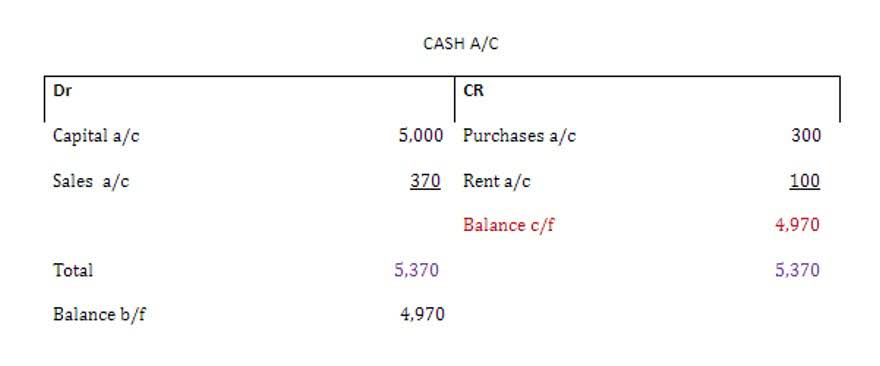
This will also help reduce risks and ensure that your business operates at its full potential. ECS Payments offers businesses the latest payment integrations to help them reduce their costs and streamline their business operations. Once again, this prevents the need to manually move data across applications and platforms. During this process, you will also want to note any difficulty you had resolving issues or tracking down related documents.
How to Calculate Rebates: A Complete Guide for Finance Professionals
If your current process is time-consuming and prone to human error, it’s time to make a change. While reconciling your payment, you can verify and estimate all the chargebacks and refunds that may influence the amount payable by your acquiring bank. For example, a payment may have a failed status in your system, while the payment status in the acquiring bank reconciling your payment is marked as successful which may result in chargebacks and reclamations. Gather any supporting documentation or statements related to payments made during a given period. 2) Vendor Reconciliation- Matching the vendor’s statements with the account payable to the vendor. Thereafter, you can reconcile refunds on the basis of their date and time, order ID and status.
- You’re looking for any charges on your credit card statement that don’t have a corresponding invoice or expense report entry.
- This is important, because unresolved issues can throw off your financial reporting and cause all kinds of issues with government regulating bodies in the future.
- Manual data entry remains the biggest hurdle in accounts payable reconciliation.
- Xero will try to find a statement line that matches a transaction you’ve already created in Xero.
- Even though this is one of the key reasons for performing payment reconciliations in the first place, it can also be a problem when completing the process.
- Making mistakes with payroll not only destroys morale but can also lead to penalties from the IRS.
Match payments to invoices
Record of payment is made internallyPayments, both incoming and outgoing, are recorded internally. This is typically done using accounting software, but could also be as simple as a written list of incoming and outgoing transactions. That’s because payment reconciliation is overwhelmingly done manually – the team must download documents across providers and institutions and match the transactions, line by line. Even the most skilled Excel guru is limited in the number of VBA scripts they can write before the system crashes under the sheer volume of transactions. In a bid to stay competitive and relevant, businesses are offering as many ways to pay and get paid as possible. HighRadius’ comprehensive AI-powered Record to Report suite allows you to streamline and improve your business’s account reconciliationprocesses.

Reconciliation

Most payment processing software such as FormPay allows you to sync records in real-time. In accounting, invoice or purchase order matching is the process of comparing documents to ensure the information aligns before the invoice gets approved and paid. If there are any discrepancies, the invoice is held without being paid until rectified. I also recommend consulting an accountant before performing the process of reconciling past transactions to ensure your records are in good shape.
This, in turn, leads to better financial decision-making, increased compliance, and reduced risk of fraud. An example of payment reconciliation is comparing a customer’s payment received via bank transfer with the corresponding issued invoice. The accountant ensures the payment amount matches the invoice, and both are accurately recorded in the company’s accounting system, resolving any discrepancies.

Step 5 Document All Changes

Under this statement, every transaction is listed, including the vendor payment methods, sales and income as well. You can also opt to maintain the records of your transactions using Excel or Google spreadsheets. It’s another manual data entry technique and requires more time utilization than accounting software.
Remittance questions are the third most common AP-related inquiries that respondents receive from their suppliers. If you run into any issues with your reconciliation, learn what to do if QuickBooks Online doesn’t match your statement at the end of real estate cash flow a reconciliation. You’ll receive a Form 1095-A when you or a family member enroll in health insurance coverage through the Health Insurance Marketplace. If you or your family members enrolled in the Marketplace in more than one qualified health plan policy, you’ll receive a Form 1095-A for each policy. Please contact your Marketplace if you have questions about its accuracy.
Reconciliation is typically performed by the accounting or finance department within an organisation. It is their responsibility to ensure the accuracy and integrity of financial records. Maintaining accurate financial records is crucial for any business or individual. One key process that ensures the integrity and reliability of financial information is reconciliation. In this article, we will delve into the meaning, definition, process, and examples of reconciliation to help you understand its significance and how to implement it effectively. Bulk payments can significantly reduce the time spent on making supplier and payroll payments.
A common trait among the most successful small businesses is that they keep highly detailed financial records. Slight accounting irregularities can quickly spiral out of control and gross vs net become a drag on a business’s overall profitability. Sloppy accounting can also prevent business owners from growing or scaling their businesses as they want to. Manual payment reconciliation leads to cash management problems since the business may not have an accurate record of how much cash is available on hand. This type of reconciliation involves reconciling financial transactions between various entities within the same organization, including subsidiaries, branches, or divisions. Accounts receivable reconciliation is the process of matching customer payments and receipts with outstanding invoices to ensure that the organization has made and collected the correct payment.